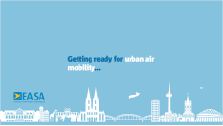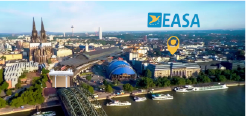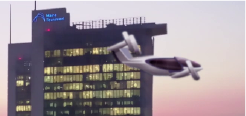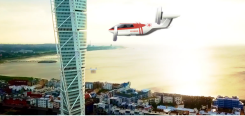URBAN AIR MOBILITY
What? UAM is a new safe, secure and more sustainable air transportation system for passengers and cargo in urban environments, enabled by new technologies and integrated into multimodal transportation systems. The transportation is performed by electric aircraft taking off and landing vertically, remotely piloted or with a pilot on board
When? Commercial operations in EU cities are expected to start around 2025 with delivery of goods by drones or transport of passengers by piloted aircraft

WHAT ARE THE BENEFITS FOR THE EU?
By 2030, 340 million people will live in EU cities and experience UAM

-
Positive economic impact with creation of 90,000 jobs by 2030

-
EU as a market leader with 31% of the global market (€ 4.2 bn total market size

-
Safer mobility: lower risk to be involved in a fatal accident in an air taxi vs. road transport

-
Faster mobility: 15 to 40 minutes saved on average on a standard city travel time and more than 70% time savings for emergency / medical delivery

-
Cleaner mobility: no local CO2 emissions for electric propulsion

CONDITIONS FOR UAM OPERATIONS
-

Affordability
VEHICLE TYPES, MAIN USE CASES AND INFRASTRUCTURE
-
 Vertiports for air taxis
Vertiports for air taxis Delivery stations for drones
Delivery stations for drones
PILOT PROJECTS
Europe is already one of the world leaders in Urban Air Mobility.
Test projects are delivering goods with drones and others will see transport of passengers with air taxis, including for medical or emergency purposes
EASA'S UAM ENABLING ACTIVITIES

-
Aircraft airworthiness

-
Airspace integration

-
Operations and pilot licensing



















